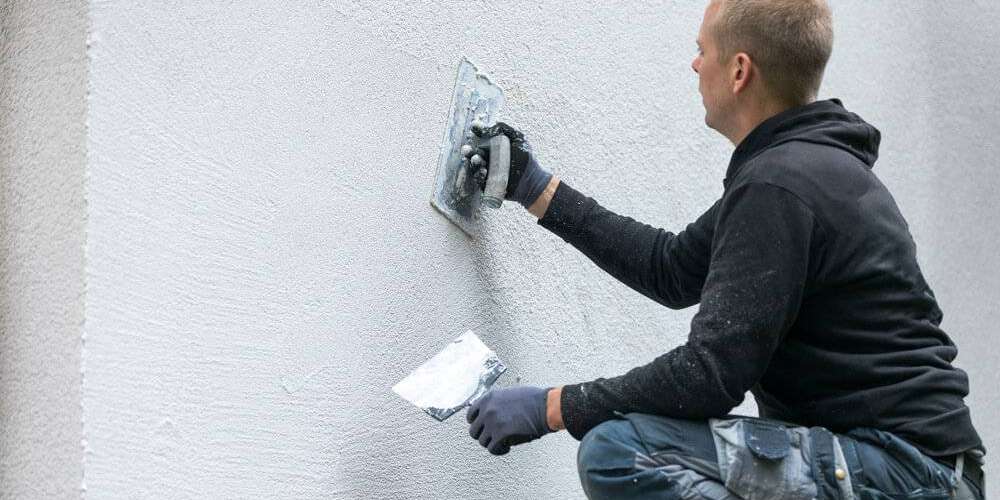
Stucco started to come into use in the 1820s to replace natural cement. Today, you can see almost all buildings covered with stucco on the exterior walls. This is because of the durability they provide.
Stucco lasts up to 5 decades. But there are some tips and techniques that can help you in prolonging the life of stucco even further. This blog talks about them.
Why Should You Use Stucco?
Stucco, which is also known as Portland cement plaster, is a type of siding made from cement that gives a wall a textured finish. It’s composed of cement, sand and water mix.
Stucco has remained a popular exterior finish for many years because it is:
- Cost-effective
- Easy to apply
- Paintable
- Durable
- Low maintenance
- Fire resistant
- Resistant to a variety of weather conditions
Stucco, when it is installed correctly and maintained well, can stay in good condition for nearly 100 years. However, the paint on stucco like any other kind of exterior surface may become faint or wear away as time goes by.
We have talked about the common stucco problems faced in our previous blogs as well.
We have a few tips that you can use to keep your stucco fresh. Keep reading to know more.
5 Stucco Maintenance Tips from Experts
Here is a detailed Stucco maintenance guide to help you prolong the life of your stucco walls:
1. Regular Cleaning
Stucco is porous, and this means it can soak up stains. Cleaning it often will keep your home from appearing dirty. It’s ideal to clean stucco 2-3 times in a year.
Garden Hose
A hose is suitable for smoother stucco textures. Begin at the wall’s bottom and go upwards when first wetting it down, after that start from the top and go downwards during the cleaning process.
Pressure Washer
A washer under pressure is a better choice for thorough and high-quality cleaning. You must search for a washer that can do 1,500 to 2,800 psi.
Use a nozzle with a 40-degree angle. Keep a safe distance to avoid harming the wall.
Set the nozzle at a distance of 12″ – 24″ inches from the wall. This implies that if you choose to use a small nozzle at an angle of 25 degrees, then stand farther away from the wall.
2. Cleaning Agents
For a little more strength in cleaning, you can use dish soap with water. If there is mold or mildew on your stucco, then bleach along with water could be an option.
Pay attention to not kill the plants around by using bleach. Mix it in a ratio of 1 part bleach to 10 parts water.
3. Seal it Up
At the beginning, a clear concrete masonry sealer is put on the outside layer of stucco. This stops any moisture from going past the stucco and into your house. You need to seal stucco every 5 years for continued prevention of dampness.
Paint
If there is paint on your stucco, you must pay special attention to the paint itself. Check for bubbles or flakes in the paint.
Remove any loose paint during the cleaning process. Then seal up the major cracks.
Apply paint onto the walls that have been cleaned and prepared. Use a urethane and acrylic resin to paint stucco, this will give it strength and flexibility.
4. Sealing up the Cracks
For stucco in older homes, think about using an elastomeric paint. This is because stucco in old homes usually has hairline cracks. These coatings block moisture from getting in and can help to close hairline fractures.
For example, a crack in the wall may not be visible when it’s dry. But, as soon as water touches the surface, this crack will become wet and easier to see. Another instance is when we use an elastomeric coating for sealing. This type of sealer remains flexible. Therefore, it functions even if the crack increases its size.
Elastomeric coating is a kind of sealer that will continue to work even if the crack becomes bigger over time because it remains flexible. You might use this for around ten years before needing another coat.
Bigger Cracks
In case you notice a bigger crack, you can use a patch. Initially, get rid of any dampness that might be present in the crack. After that, apply the patch to close off the section and stop more harm from occurring.
5. Don’t Delay Repairs
As time goes on, stucco may develop cracks, holes and chips. These flaws are unsightly and affect the structure’s strength.
If stucco cracks are not fixed, they will become wider and more visible. These cracks are ideal spots for mold and mildew growth.
Stucco Exterior
Being watchful with stucco repair will make sure it’s strong for many years. Inspect the stucco exterior 2 to 3 times each year.
Check for any cracks in the stucco that require fixing. Make sure you clean the stucco a minimum twice a year to remove dirt, stains and mold.
Check if your stucco has paint on it and look for areas where the paint is peeling or bubbling. If you find any such areas, repaint them as required.
When there are little cracks, you must close them fast. Paint and coatings can seal up the smaller ones while larger cracks require a patch.
Want to know the cost to paint a stucco house? Contact us today to know!
About Us
We are your neighborhood’s professional local painters. We specialize in painting different surfaces across the country, so whether you are looking for Cabinet Painting in St. Paul or exterior painters in Minneapolis, feel free to contact us to get a quote!
